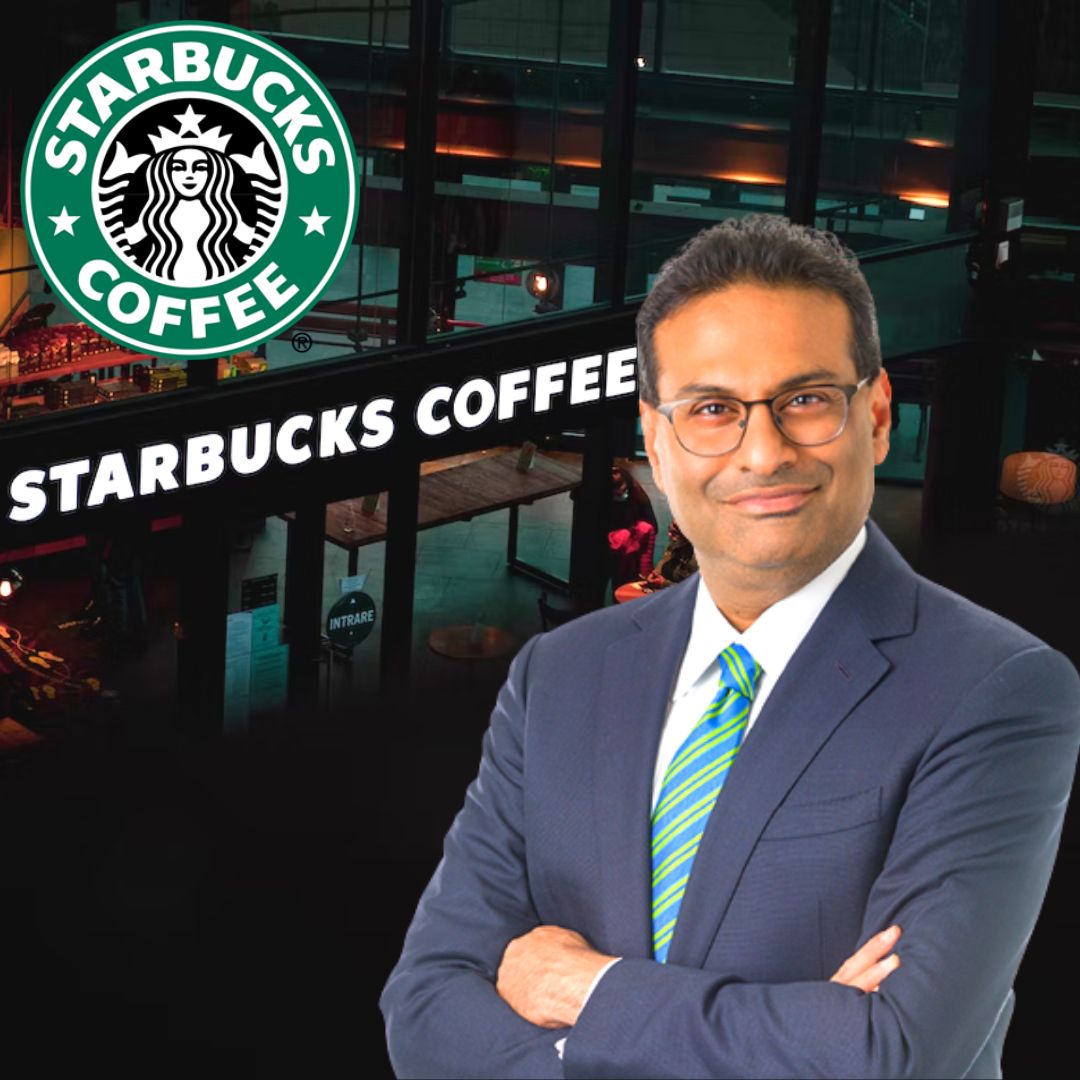Howard Schultz: The Visionary Leader: Ceo Of Starbucks

Howard Schultz, the iconic leader behind Starbucks’ global success, is more than just a businessman; he’s a visionary who transformed a small Seattle coffee shop into a cultural phenomenon. Schultz’s leadership, passion, and unwavering belief in the power of human connection have shaped Starbucks into the coffee giant it is today.
Howard Schultz’s Journey: From Salesman to Visionary
Schultz’s journey began in 1982 when he joined Starbucks as a marketing director. He was immediately captivated by the company’s unique coffee culture and the passion of its founders. However, Schultz recognized a potential for growth beyond the traditional coffee shop model. In 1987, he bought Starbucks and embarked on a mission to redefine the coffee experience.
Schultz’s vision was rooted in the belief that coffee could be more than just a beverage; it could be a catalyst for connection and community. He envisioned a third place, a space between home and work where people could gather, socialize, and enjoy a high-quality coffee experience.
This vision led to the development of the iconic Starbucks “third place” concept, which has become synonymous with the brand. The focus on customer experience, comfortable seating, and a welcoming atmosphere played a crucial role in Starbucks’ rapid expansion.
Schultz’s Leadership Style: Building a Culture of Passion
Schultz’s leadership style is characterized by a deep commitment to his employees, known as “partners.” He believed in empowering his team and fostering a culture of collaboration and innovation. Schultz’s emphasis on employee well-being and benefits, including healthcare and stock options, played a significant role in building a loyal and dedicated workforce.
Schultz’s leadership was also marked by his unwavering passion for coffee and his dedication to creating a unique and memorable customer experience. He instilled this passion in his team, encouraging them to treat every customer like a guest in their own home.
Schultz’s Role in Shaping Starbucks’ Brand Identity
Schultz understood the power of brand storytelling and used it to create a strong connection with Starbucks’ customers. He positioned Starbucks as more than just a coffee company; it became a symbol of community, connection, and shared experiences.
Schultz’s vision extended beyond the product itself. He focused on creating a brand identity that resonated with customers’ values and aspirations. Starbucks’ commitment to sustainability, ethical sourcing, and community engagement further strengthened its brand image and solidified its connection with customers.
Schultz’s Evolving Vision: Adapting to Changing Market Conditions
Schultz’s vision for Starbucks has evolved over time, adapting to changing market conditions and consumer preferences. He recognized the importance of innovation and introduced new products and services, such as the Starbucks Reserve Roastery and the mobile ordering app, to stay ahead of the curve.
Schultz also understood the need to address concerns about sustainability and social responsibility. Starbucks implemented initiatives to promote ethical sourcing, reduce its environmental impact, and support local communities. These initiatives further enhanced the brand’s image and resonated with socially conscious consumers.
Starbucks’ Business Model and Strategy

Starbucks’ success can be attributed to its well-defined business model, which focuses on delivering a premium coffee experience, fostering brand loyalty, and driving sustainable growth. The company has consistently evolved its strategy to adapt to changing market dynamics and consumer preferences, solidifying its position as a global leader in the coffee industry.
Revenue Streams
Starbucks generates revenue primarily through the sale of beverages and food items at its stores. The company also earns revenue from licensing agreements, packaged coffee sales, and its loyalty program. Starbucks’ diverse revenue streams contribute to its financial stability and resilience.
- Beverage Sales: This constitutes the largest portion of Starbucks’ revenue, accounting for approximately 70% of its total sales. The company offers a wide range of beverages, including coffee, tea, espresso drinks, Frappuccinos, and other specialty drinks.
- Food Sales: Starbucks offers a selection of food items, including pastries, sandwiches, salads, and yogurt parfaits. These items complement the beverage offerings and contribute to the overall customer experience.
- Licensing Agreements: Starbucks licenses its brand and intellectual property to other companies, allowing them to operate Starbucks stores in specific locations. This revenue stream allows Starbucks to expand its reach without directly investing in new stores.
- Packaged Coffee Sales: Starbucks sells packaged coffee beans and ground coffee through its stores, online channels, and retail partners. This segment allows Starbucks to reach a broader customer base beyond its core coffee shop audience.
- Loyalty Program: Starbucks’ rewards program, Starbucks Rewards, offers customers exclusive benefits and discounts, driving repeat purchases and customer loyalty. The program generates revenue through membership fees and increased sales from members.
Customer Segmentation
Starbucks targets a diverse customer base, ranging from busy professionals to students and families. The company segments its customers based on factors such as demographics, lifestyle, and consumption patterns.
- Core Coffee Lovers: This segment consists of customers who are passionate about coffee and appreciate the quality and variety of Starbucks’ offerings. They are typically frequent visitors and loyal customers.
- Occasional Coffee Consumers: This segment includes customers who enjoy coffee but may not visit Starbucks regularly. They are attracted to the brand’s convenience, ambiance, and occasional special offers.
- Non-Coffee Drinkers: Starbucks caters to this segment by offering a wide range of non-coffee beverages, such as tea, smoothies, and other specialty drinks. These customers are attracted to the brand’s overall experience and atmosphere.
Competitive Advantages
Starbucks enjoys several competitive advantages that have contributed to its success, including:
- Strong Brand Recognition: Starbucks has built a strong brand identity over the years, recognized for its premium coffee, unique atmosphere, and commitment to customer experience.
- Global Presence: With over 30,000 stores in 80 countries, Starbucks has a vast global reach, providing convenience and accessibility to customers worldwide.
- Loyal Customer Base: Starbucks has a loyal customer base, driven by its rewards program, consistent quality, and strong brand loyalty.
- Experienced Management Team: Starbucks’ management team has extensive experience in the retail and coffee industries, providing strategic leadership and operational expertise.
- Focus on Innovation: Starbucks consistently invests in product innovation, introducing new beverages, food items, and technologies to enhance the customer experience.
Key Strategic Initiatives
Starbucks has implemented several strategic initiatives to maintain its leadership position in the coffee industry, including:
- Expansion Strategy: Starbucks continues to expand its global footprint, opening new stores in emerging markets and developing countries. The company aims to leverage its brand recognition and operational expertise to capture new market share.
- Product Innovation: Starbucks constantly introduces new products and variations of existing offerings to cater to evolving consumer preferences. The company also focuses on seasonal and limited-edition items to create excitement and drive sales.
- Digital Transformation: Starbucks has embraced digital technologies to enhance the customer experience and streamline operations. The company’s mobile app allows customers to order ahead, pay with their phones, and earn rewards points.
- Sustainability Initiatives: Starbucks has committed to sustainability, focusing on ethical sourcing, environmental conservation, and community engagement. These initiatives contribute to the company’s brand image and attract environmentally conscious customers.
Role of Technology in Starbucks’ Operations
Technology plays a crucial role in Starbucks’ operations, enabling the company to enhance efficiency, improve customer experience, and drive innovation.
- Mobile Ordering and Payment: Starbucks’ mobile app allows customers to order and pay for their drinks and food ahead of time, reducing wait times and improving convenience.
- Personalized Recommendations: The app uses customer data to provide personalized recommendations and offers, enhancing the customer experience and driving sales.
- Store Operations Management: Technology helps Starbucks manage its stores efficiently, from inventory control to employee scheduling.
- Data Analytics: Starbucks uses data analytics to understand customer preferences, track sales trends, and optimize its marketing campaigns.
Comparison to Competitors, Ceo of starbucks
Starbucks faces competition from a wide range of players in the coffee industry, including:
- Specialty Coffee Chains: Competitors such as Peet’s Coffee, Dunkin’ Donuts, and Tim Hortons offer similar products and services to Starbucks. These companies focus on convenience, affordability, and a variety of beverage and food options.
- Independent Coffee Shops: Local and independent coffee shops offer a more personalized and artisanal experience, often focusing on specialty coffees, unique brewing methods, and a community-driven atmosphere.
- Supermarket Chains: Supermarkets offer a wide range of coffee products, including pre-ground coffee, coffee pods, and single-serve coffee machines. They compete with Starbucks on price and convenience.
Challenges and Opportunities for Starbucks

Starbucks, despite its global dominance, faces a multitude of challenges in the dynamic coffee industry. These challenges, however, also present opportunities for growth and innovation. This section explores the key challenges and how Starbucks can leverage them to maintain its leadership position.
Competition
The coffee industry is fiercely competitive, with numerous established players and emerging brands vying for market share. Starbucks faces competition from various sources, including:
- Specialty Coffee Shops: Independent coffee shops and regional chains like Blue Bottle Coffee and Stumptown Coffee Roasters offer a more artisanal and personalized experience, attracting customers seeking unique flavors and high-quality beans.
- Fast Food Chains: Fast food giants like McDonald’s and Dunkin’ Donuts have expanded their coffee offerings, providing convenient and affordable options, especially for price-conscious consumers.
- Convenience Stores: Convenience stores like 7-Eleven and Circle K have also entered the coffee market, offering readily available coffee options at competitive prices.
- Online Retailers: Online retailers like Amazon and Thrive Market offer a wide selection of coffee beans and brewing equipment, allowing customers to purchase directly from their homes.
Starbucks addresses this challenge by:
- Innovation and Product Differentiation: Continuously introducing new beverages and food items, such as plant-based options and seasonal specials, to cater to evolving consumer preferences and stay ahead of the competition.
- Focus on Customer Experience: Emphasizing personalized service, comfortable store environments, and loyalty programs to foster customer loyalty and create a differentiated experience.
- Strategic Partnerships: Collaborating with other brands and businesses to offer exclusive products and promotions, expanding its reach and appeal to new customer segments.
The CEO of Starbucks plays a crucial role in shaping the company’s future, leading the global coffee giant through evolving market trends and consumer preferences. Currently, that responsibility rests on the shoulders of starbucks ceo brian niccol , who has been at the helm since 2019.
Niccol’s leadership has been instrumental in driving Starbucks’ innovation and growth, focusing on enhancing the customer experience and expanding the brand’s reach worldwide.
The CEO of Starbucks, a position that has seen its fair share of changes in recent years, is now in the hands of Laxman Narasimhan. He stepped into the role in April 2023, following the departure of Howard Schultz, who briefly returned to the helm in 2022.
Narasimhan’s arrival marks a new chapter for the coffee giant, one that focuses on innovation, customer experience, and a renewed emphasis on the company’s core values. Read more about Starbucks’ new CEO and his vision for the future. As Narasimhan takes the reins, the world watches to see how he will shape the legacy of the iconic coffee brand.